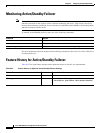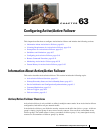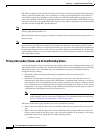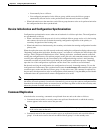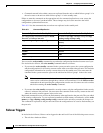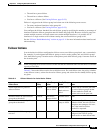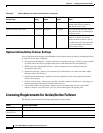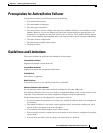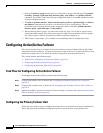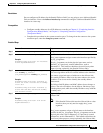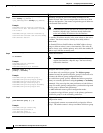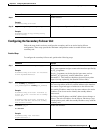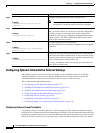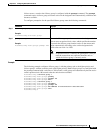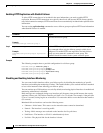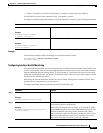
63-8
Cisco ASA 5500 Series Configuration Guide using the CLI
Chapter 63 Configuring Active/Active Failover
Configuring Active/Active Failover
• Entering the failover group command puts you in the failover group command mode. The primary,
secondary, preempt, replication http, interface-policy, mac address, and polltime interface
commands are available in the failover group configuration mode. Use the exit command to return
to global configuration mode.
• The failover polltime interface, failover interface-policy, failover replication http, and failover
mac address commands have no affect on Active/Active failover configurations. They are
overridden by the following failover group configuration mode commands: polltime interface,
interface-policy, replication http, and mac address.
• When removing failover groups, you must remove failover group 1 last. Failover group1 always
contains the admin context. Any context not assigned to a failover group defaults to failover group 1.
You cannot remove a failover group that has contexts explicitly assigned to it.
• VPN failover is unavailable. (It is available in Active/Standby failover configurations only.)
Configuring Active/Active Failover
This section describes how to configure Active/Active failover using an Ethernet failover link. When
configuring LAN-based failover, you must bootstrap the secondary device to recognize the failover link
before the secondary device can obtain the running configuration from the primary device.
This section includes the following topics:
• Task Flow for Configuring Active/Active Failover, page 63-8
• Configuring the Primary Failover Unit, page 63-8
• Configuring the Secondary Failover Unit, page 63-11
Task Flow for Configuring Active/Active Failover
To configure Active/Active Failover, perform the following steps:
Step 1 Configure the primary unit, as shown in the “Configuring the Primary Failover Unit” section on
page 63-8.
Step 2 Configure the secondary unit, as shown in the “Configuring the Secondary Failover Unit” section on
page 63-11.
Step 3 (Optional) Configure optional Active/Active failover settings, as shown in the “Optional Active/Active
Failover Settings” section on page 63-6.
Configuring the Primary Failover Unit
Follow the steps in this section to configure the primary unit in an Active/Active failover configuration.
These steps provide the minimum configuration needed to enable failover on the primary unit.



